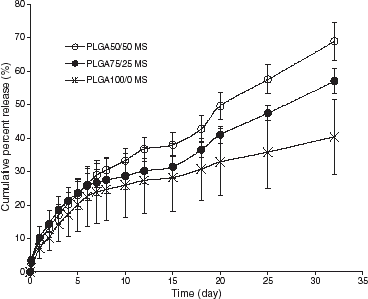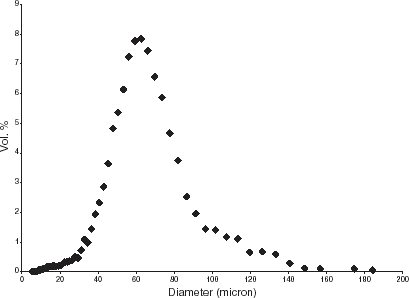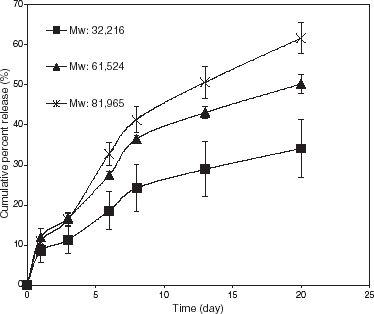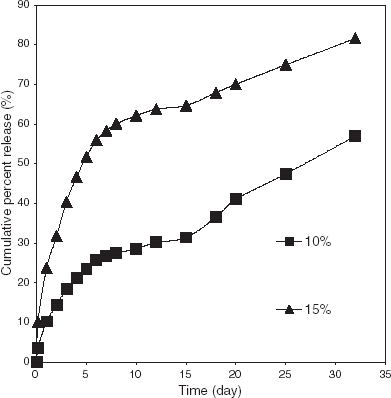Figures & data
Figure 1. A schematic illustration of the solvent extraction method used for preparation of the progesterone-containing PLGA microspheres.

Table 1. Effect of polymer composition on size of the progesterone-containing PLGA microspheres
Table 2. Effect of polymer molecular weight on size of the progesterone-containing PLGA microspheres
Table 3. Effect of polymer composition on drug encapsulation efficiency of the progesterone-containing PLGA microspheres
Table 4. Effect of polymer molecular weight on drug encapsulation efficiency of the progesterone-containing PLGA microspheres
Figure 4. Effect of polymer composition (molar ratio of lactic to glycolic acid moiety) on progesterone release from the PLGA microspheres. (Molecular weight of the PLGA: 11,351–14,914 Dalton; Theoretical/feeding drug content: 10% by weight).




